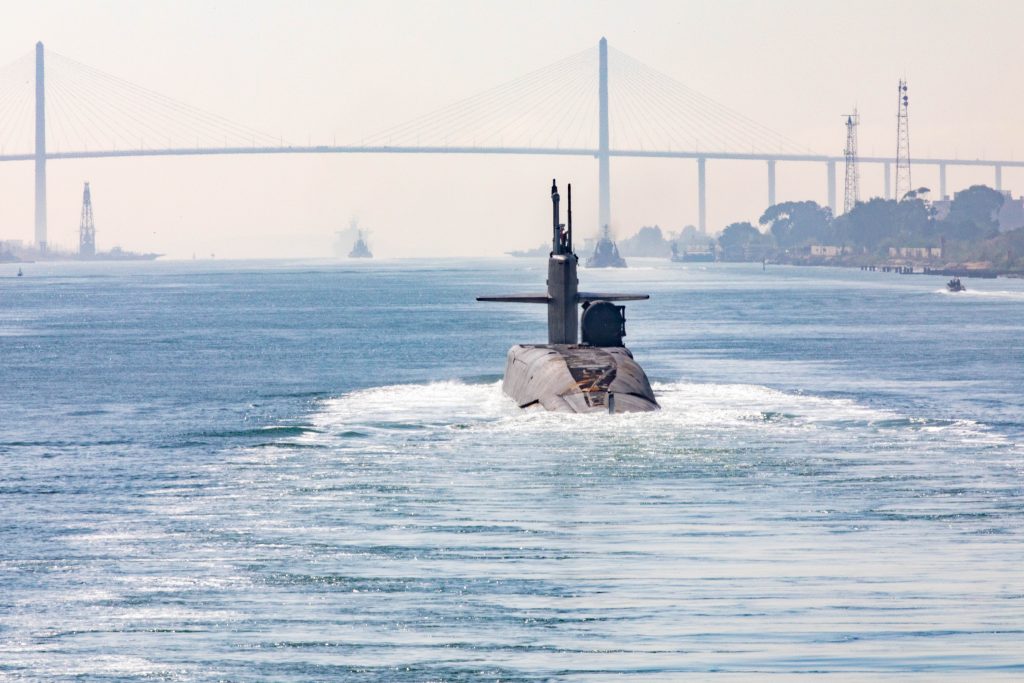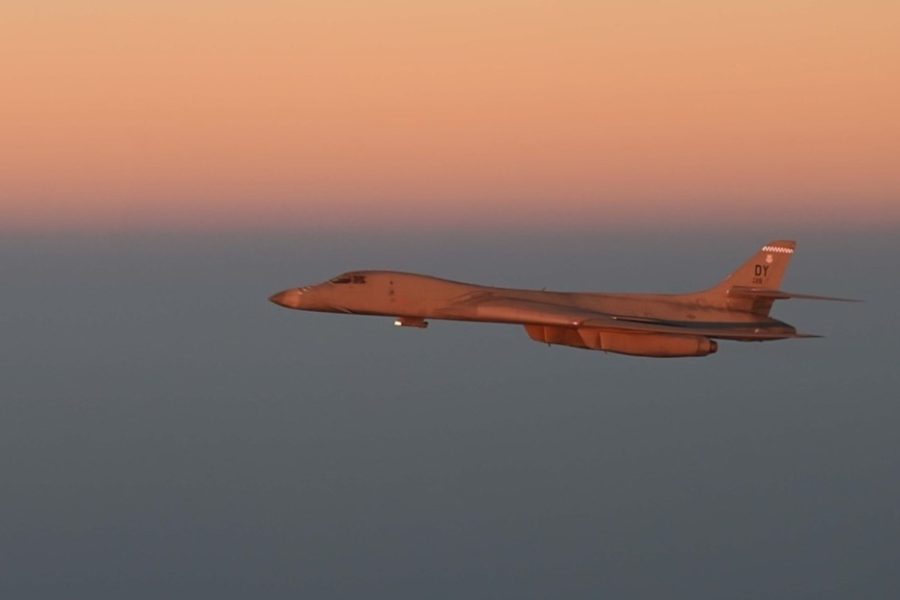The United States displayed a show of force in the Middle East on Nov. 5 with bomber flyovers and the deployment of a guided-missile submarine in the region against a backdrop of continuing attacks against U.S. troops in Iraq and Syria.
The U.S. is attempting to deter Iran, Lebanese Hezbollah, and other Iranian proxy forces from trying to capitalize on the war between Israel and Hamas in Gaza and stoke a broader regional conflict.
The Dyess Air Force Base, Texas-headquartered B-1 bombers, which deployed to Europe in October, flew over parts of U.S. Central Command (CENTCOM) on Nov. 5. The flight was part of a “long-planned Bomber Task Force mission” Pentagon Press Secretary Air Force Brig. Gen. Patrick S. Ryder told reporters Nov. 6. The bombers’ last known location was Incirlik Air Base in Turkey, part of U.S. European Command (EUCOM).
“It’s important to differentiate the Bomber Task Force mission from the current situation in the Middle East,” Ryder said.
A U.S. official familiar with the mission said the B-1s flew from a location in EUCOM through CENTCOM and onto the U.S. Africa Command region before returning to EUCOM.
The B-1s have a greater payload than either the B-2 Spirit stealth bomber or B-52 Stratofortress. Along with an undisclosed number of B-1s, some 100 Air Force support personnel arrived at RAF Fairford in the U.K. on Oct. 13 for the BTF.
During typical BTFs, bombers conduct exercises with allies and partners in the region and make unannounced base visits. B-1s from a BTF deploying to Europe conducted live-fire exercises at ranges in Jordan and Saudi Arabia in June. The Israeli Air Force separately joined the B-1s along their route.
Long used as a U.S. aerial tanker base and deployment hub in the region, thousands of protesters descended on Incirlik on Nov. 5. Based on photos circulating on social media, protesters swarmed the fence line at Incirlik, angry at American support for Israel in the wake of Hamas’ Oct. 7 attacks on Israel. Turkish police used tear gas and water cannons to subdue the protesters, who eventually withdrew.
Hours after the protesters dispersed, U.S. Secretary of State Antony Blinken arrived in the Turkish capital of Ankara for talks with Turkey’s defense minister, Hakan Fidan, about the war in Gaza and other regional issues. Blinken also made a surprise visit to Baghdad to meet with Iraqi Prime Minister Mohammed Shia Al-Sudani in an attempt to stop attacks on American troops by Iranian-backed Iraqi militias.
According to a U.S. military official, American troops have been attacked in Iraq and Syria at least 38 times since Oct. 17. At least six of those attacks have occurred since Nov. 5, a significant uptick.
The U.S. also said the number of personnel injured in the attacks is more than double what the Pentagon previously disclosed, rising to at least 45 troops. Ryder said they suffered a mix of traumatic brain injuries (TBI) and “minor injuries.” Two of the personnel who were diagnosed with TBI initially returned to duty but have now been transported to Landstuhl Regional Medical Center, Germany, for “further examination and care.” The U.S. has ascribed the attacks to Iranian-backed militias.
The U.S. presence in the region now includes two aircraft carriers, the USS Dwight D. Eisenhower in the Red Sea and the USS Gerald R. Ford in the eastern Mediterranean Sea, increased air defense systems, and doubled the number of Air Force fighter and attack squadrons—up to three F-16 squadrons, one F-15E squadron, and two A-10 squadrons.
However, the BTF is different, the Pentagon says.
“We do have the ability to walk and chew gum,” Ryder said.
The BTFs—which are deployed multiple times a year to multiple theaters—demonstrate “to our allies and our partners the capabilities we have to respond to a variety of situations, while showing our potential adversaries that we have these capabilities,” he added.
U.S. Central Command identified the submarine as an Ohio-class cruise missile boat operating in its area of responsibility under the control of the U.S. Fifth Fleet. Theater commands rarely announce the presence of a submarine in their areas, as the vessels generally rely on stealth, so the move is undoubtedly a message to deter would-be opportunists in the region.

Photos of the boat in the Suez Canal were released along with the announcement.
The Navy has four Ohio-class guided-missile submarines—SSGNs—capable of carrying 145 Tomahawk land-attack cruise missiles (TLAMs) each. A TLAM has the destructive capacity of a 2,000-pound bomb but can be launched from up to 1,400 nautical miles away and can employ low-level, terrain-following routes to avoid detection and interception. The boats were converted from carrying nuclear-armed Trident sea-launched ballistic missiles in the early 2000s when the Defense Department determined that, rather than retiring four Ohio-class vessels, they would be useful in a conventional role.
The first use of SSGNs in their conventional land-attack role was during Operation Odyssey Dawn in 2011 when the USS Florida fired more than 90 Tomahawks at targets in Libya. The SSGN’s Tomahawk load is 50 percent greater than that of a guided missile destroyer.
The U.S. Fifth Fleet and the Pentagon declined to offer further details on the exact submarine deployed to CENTCOM.
“What this does is further support our deterrence efforts in the region, and I’ll just leave it at that,” Ryder said.
